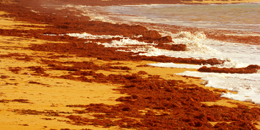From the ocean to human body
Where the rebuilding of bone tissue is needed to repair a defect and continued structural support is not a limiting factor, exploiting the body's own self-healing mechanisms is most desirable. The natural process of bone tissue regeneration can be enhanced by filling the defect with various bone substitute materials, as well as bone forming materials. Conventional synthetic materials such as polylactides and polyglycocides that display mechanical properties analogous to those of bone tissue are highly sensitive to temperature and moisture. On the other hand, polymeric materials degrade in situ and are replaced by newly formed bone, a necessary step in the healing process. An attractive alternative to synthetic materials is Algisorb®, a natural material derived from marine red algae that is cultivated along the coasts of Africa and Europe. More specifically, the ALGISORB project partners were able to synthesise it from their calcite skeleton which, besides hydroxylapatite (HA) also contains tricalciumphosphate (TCP). The amount of TCP contained in this granulated material can be regulated and may be raised up to 95% in order to increase the rate of resorption of the bone implant. Moreover, it is biocompatible and conducts new bone formation around the implant but also within its micropores of 10 to 30 microns. All the materials used to compose Algisorb® were products of biomimetic syntheses, where natural biological structures get transformed chemically and their crystal structure modified. As they retain their microstructural properties, each compound could be identified with the use of X-ray powder diffraction. Among the methods used to analyse the X-ray powder diffraction data collected at Röntgenlabor in Germany, the Rietveld method allowed determination of the phase composition of the raw materials. The results were nearly as accurate as those obtained with single crystal diffraction techniques, opening the way for the manufacture of biomaterials with reproducible quality.



